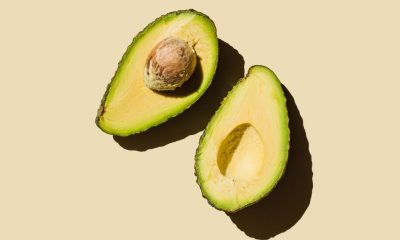Videos
This Easy Addition to Your Egg Muffins Will Double Your Protein at Breakfast

I’m the type of person who won’t eat breakfast unless it can be ready in five minutes or less. That means I rely a lot on stuff like cereal, microwave oatmeal, and smoothies—or, to be honest, I forget I’m supposed to eat entirely, until I find myself suddenly ravenous a couple hours later.
While my quick breakfasts certainly are convenient and provide a brief energy boost from carbohydrates, they lack the protein I need to successfully avoid feeling like a raw ball of nerves before lunch time. As a food writer and avid home cook, I’m well aware that the classic egg muffin—simply whisked eggs mixed with veggies and baked in a muffin tin—has always seemed like a great way to circumvent this: Eggs are loaded with protein…right?
Well, sort of. One large egg brings in six grams, so even if you’re taking in two full ones with your egg muffins, you’re still only getting 12. And experts generally recommend about 15 to 20 grams of protein at breakfast to help you stay satisfied, Maxine Yeung, MS, RD, founder of the Wellness Whisk, tells SELF. It’s no wonder I found myself hungry shortly after eating a couple. What’s more, the thought of the limp, yellow lumps waiting for me in my fridge didn’t exactly make me want to jump out of bed in the morning.
Then a new possibility came to my attention. Scrolling through TikTok, I found home cooks whipping up egg muffins with about double the protein thanks to the help of one of my favorite ingredients: cottage cheese.
And you could take it so many ways, like sweet (say, this chocolate chip version or this option with blueberries) or savory (for instance, with olives and rosemary for a Mediterranean spin or pesto and tomatoes for Italian flavors).
I was feeling the savory route, so I decided to try a broccoli, spinach, and turkey sausage number from Nicole Addison, RD. It promised ample protein (a whopping 16 grams per muffin, while traditional versions usually come in the six to eight range), and to also help me in another area I often struggle with—eating more vegetables before noon.
I planned on prepping and freezing a batch of these to eat for breakfast all week long, but I could easily see myself whipping them up in the morning with how quickly they came together. All in all, prep took me just 10 minutes total and—if you’re using pre-chopped veggies—you could do it in even less time.
Audrey Bruno
Source: Self

-

 Politics2 days ago
Politics2 days agoLatest news on the 2024 election: Biden fundraising in San Francisco and Seattle regions
-

 Politics2 days ago
Politics2 days agoThe Biden Administration’s decision to publicly confront Israel over Rafah
-

 News2 days ago
News2 days ago£132,000 farmhouse on the brink of 150ft cliff starts demolition as owner evacuated – neighbor vows to stay until his death.
-

 Uncategorized2 days ago
Uncategorized2 days agoThe Washington Post – Breaking news and latest headlines, U.S. news, world news, and video
-

 Lifestyle2 days ago
Lifestyle2 days agoSelena Gomez shares adorable photo with Benny Blanco amidst Justin Bieber baby news
-

 News2 days ago
News2 days ago16-year-old accused of defacing World War I statue in New York City
-

 Tech2 days ago
Tech2 days agoShifting AI Podcast: Exploring the Evolution of Artificial Intelligence in 2024 with Microsoft Distinguished Engineer Pablo Castro
-

 Wellness2 days ago
Wellness2 days agoExperts Share the 11 Best Sunscreens for Oily Skin in 2024















